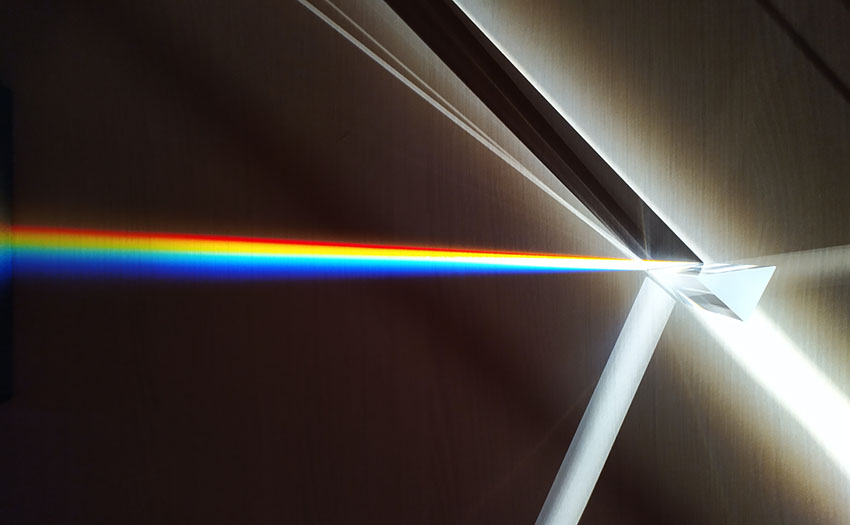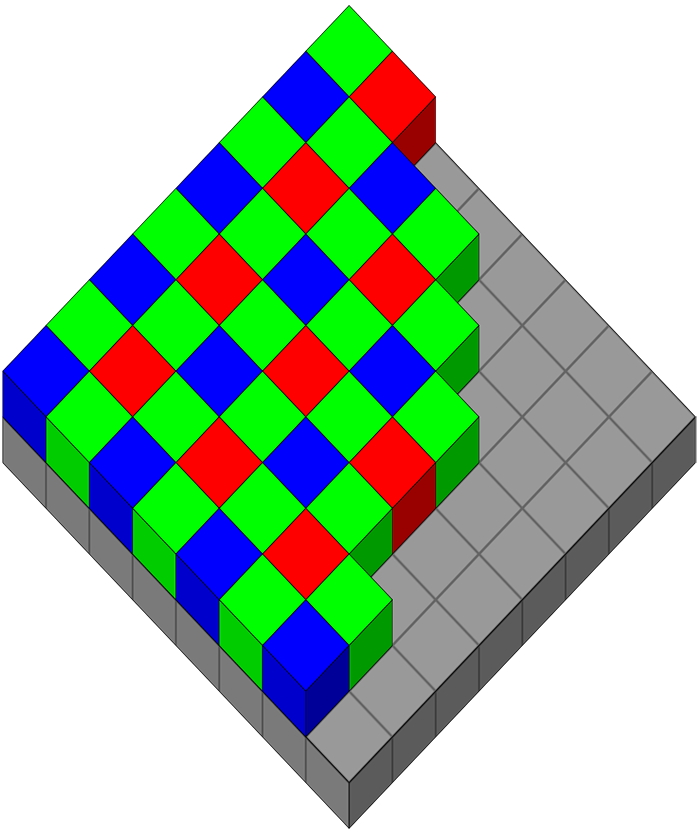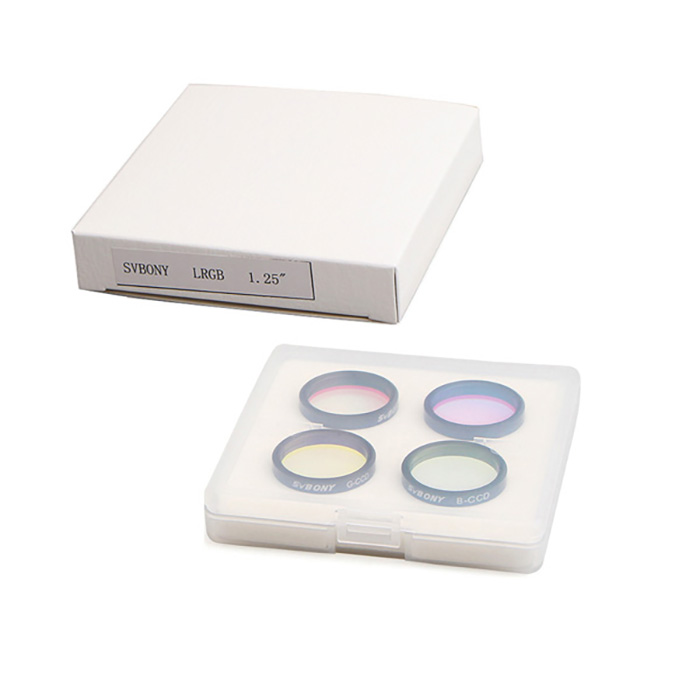Table of Contents

Seven Samurai: LRGBSHO filters
Mono camera
First, let’s take a look at the color cameras. The reason why a color camera can take color photos is that it has a layer called a Bayer filter attached to the sensor. Bayer filters are actually RGB (red, green, and blue) used to collect color information. In this way, the RGB color information is collected, and then the debayer algorithm is used to process the picture and finally get a color photo. So, a black and white camera is a camera without a Bayer filter.

Bayer filter. Source:https://en.wikipedia.org/wiki/Bayer_filter
The images taken by a mono camera are pure black and white. Also since It has no Bayer filter, no grid, no other calculation, the image could be clearer and more detailed.

LRGB
In the same way as a color camera, mono cameras can get color information through RGB filters.
In order to obtain more details, besides the RGB filter, there’s also an L filter(Luminance filter). It captures the entire visible light.
When shooting with a mono camera, you need to install the filter in the filter wheel. This makes it easy to replace the filter, and it can also be sealed from the spare light. Shooting through LRGB filters one by one and then combines to get the final image with true colors(the color of the image is consistent with nature). During the process, L provides brightness and details, RGB provides the color.
We can also shoot without L filters, in that case, the details and colors are provided by RGB.

Pseudo-color&Narrow band(SHO)
Pseudo-color means unreal color. In astrophotography, there are some wavelengths that are invisible to the human eye, such as infrared and ultraviolet. There is also some very special bands of lights, such as the hydrogen-alpha spectrum. Therefore, after shooting them with filters, we will give them specific colors for scientific research and artistic effects.
Ha, SII, OIII are three narrow-band filters commonly used in deep-sky photography. They are called narrowband because the wavelength of the light that passes through is narrow. SHO represents the abundance of specific elements in the emission nebula. The hydrogen element can emit a special spectrum (H-α) of 656.28nm, and the sulfur and oxygen elements can also emit a special spectrum (SII and OIII). The narrowband filter is to get the corresponding bands of these spectra.

In this way, we can photograph the abundances of the three elements (hydrogen, sulfur, and oxygen) in the nebula and give them specific colors to synthesize a pseudo-color photo.

There are no customer reviews yet . Leave a Reply !